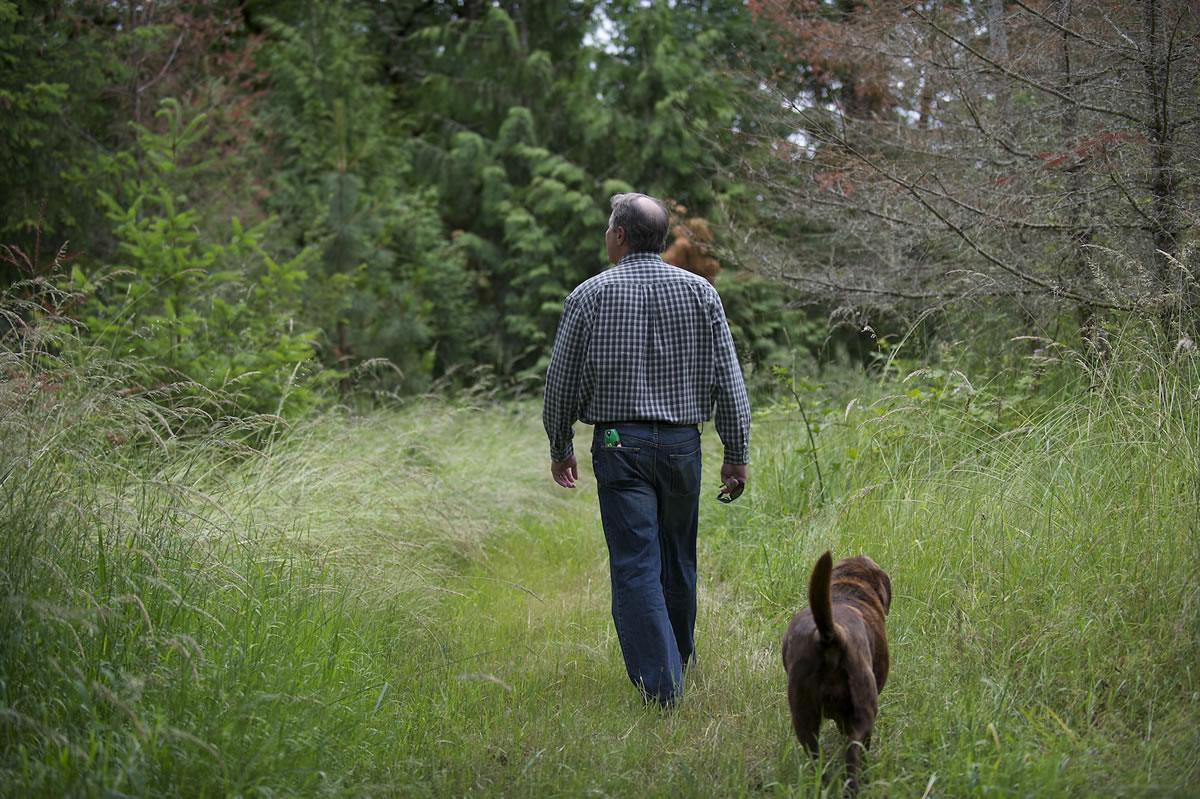RIDGEFIELD — Kent Landerholm doesn’t mind a little cool, showery weather this time of year.
Actually, the Ridgefield-area resident welcomes it. As spring turns to summer, he’s hoping 2013 isn’t a repeat of 2012.
Trudging through his small tree farm outside Ridgefield, Landerholm can still see the results of the record-setting dry spell that parched Southwest Washington for the better part of three months last year, which was compounded by a dry start to this year. Throngs of Douglas firs are punctuated in spots by red or bare branches. In some cases, entire trees have shed their needles and been reduced to brittle skeletons.
The trees showing fewer signs of distress may still recover. Others won’t.
“It’s really almost a year process when you actually see it,” Landerholm said.
The damage isn’t catastrophic for Landerholm — he estimates less than 5 percent of his trees were affected — but it’s certainly enough to take notice. Other nearby farms have seen higher rates of dead or damaged trees since last year, he said.
Landerholm isn’t alone. The state Department of Natural Resources has reported heightened tree mortality in parts of Western Washington this year. Younger Douglas firs appear to be most damaged, but even some older trees are showing red crowns, red tops and red branches, according to DNR.
That kind of tree damage is normal to some extent, caused by numerous factors in a typical year. But this year, DNR suspects one primary culprit: drought.
“We’re thinking that most of the damage was done last summer,” said Glenn Kohler, a DNR forest entomologist.
At one point, Vancouver recorded just 0.04 inches of rain during an 83-day run stretching from July to October 2012. Rain returned with a vengeance toward the end of the year, but gave way to a dry start to 2013.
Even in the hardest-hit stands, most trees received enough water and were unaffected, according to DNR. Areas with rocky soil unable to hold as much water were more susceptible. That includes some parts of east Clark County and the Columbia River Gorge, Kohler said.
The Vancouver area is a different story. Despite the run of dry weather, trees in the urban area have been largely unaffected, and haven’t seen anything out of the ordinary, said Charles Brun, a horticulture adviser with Washington State University Clark County Extension. In the city, it’s often human-caused harm that brings about a tree’s early demise, he said.
Maybe it’s a putting down a driveway too close to a Douglas fir. Maybe it’s a major root injury caused by development. Other trees are simply predisposed to dying or toppling due to an existing vulnerability.
An evergreen tree will usually reveal its health through its needles. Clusters of lighter green needles on the ends of branches show new growth, and usually a tree that’s in good shape. Drying on certain branches might show localized, less severe damage. A completely dead top probably means bad news.
“When the tree is dying from the top down, then that’s a tree that won’t be long for this life,” Brun said.
At Landerholm’s property, distressed trees have invited another sign of ill health: beetles. The insects burrow and nest in dead or dying trees, hastening — but not causing — their demise, Kohler said.
Landerholm said he plans to remove the trees he knows are long gone. He can’t harvest or sell them — they’re not worth much more than firewood, he said. But they are a fire hazard.
To adapt, Landerholm has started planting more resilient pine in a few of the afflicted areas on his property — and said he’s not the only one. The move comes with a downside, however. Pines aren’t as valuable as the fir trees that dominate the rest of his and other tree farms.
Landerholm is hoping some of his damaged trees will recover. That is, he’s hoping this summer doesn’t deliver another extended run of bone-dry weather.
If it does? “We’re going to lose a lot more trees,” he said.
Eric Florip: 360-735-4541; http://twitter.com/col_enviro eric.florip@columbian.com




